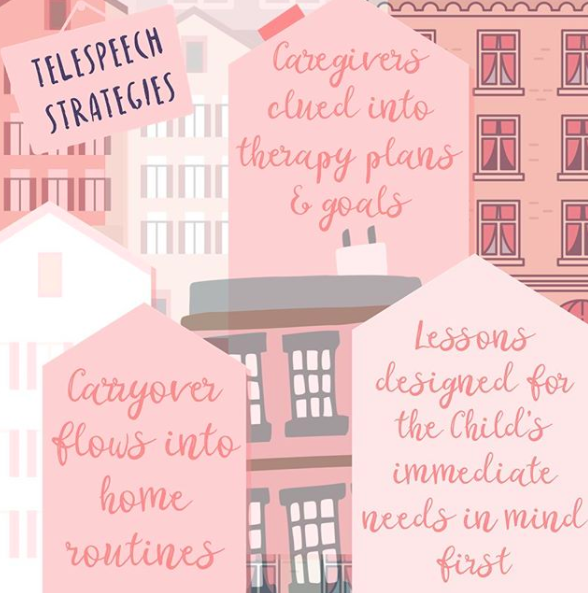My Top Three TeleSpeech Strategies for Online Speech Therapy:

1. Caregivers clued into speech therapy plans & goals: I try to make sure parents know why things are happening when they are happening. For example, I had a session this week with a little boy recently diagnosed with autism. The activity we were looking at involved preference making. In order to complete the activity he had to look at the item on the screen and decide if he liked it, and then look at his dad and ask his dad “do you like it?” BEFORE the activity I asked dad to NOT use words to respond and instead use gestures & expressions. That way the child had to look at his dad to understand his response. The dad understood that part of the challenge his son is having is not picking up on social cues, so this was an easy activity for him to continue working on after the session was over. One important and easily looked over strategy is going over a prompt hierarchy with parents. Sometimes when a child is not answering a question
2. Carryover flows into home routines: I think right now (in COVID-19) it is important that homework and carryover plans flow into what is currently happening at home. @speechymusings had a clever idea. She sent home an Earth Day scavenger hunt wherein the child had to look for things around their house that matched items on the list (ex wood items, plastic items). There was no extra effort to be made or materials to buy for the child to complete the activity and it is easy to fit into current routines. Speech therapy has to be part of the routine, or it becomes too much to add on top of the pressures of the new home routines.
3. Lessons designed for the child’s immediate needs in mind first: I am asking the kids and parents, “What can I help you with??” Since we are in COVID-19 and the family and child’s need are very different right now, being good at “therapy” is top of mind for me as a speech pathologist. I really do not want the kids/parents I work to be overwhelmed and anxious to “go to speech” or finish speech therapy homework. I know this will not be the same for all, but I am trying my best to make speech fun and interactive and something that helps them with their communication, speech and feeding in order to get their needs met at home. This for me, means spending time doing a bit more prep than normal, and being a bit more organized than normal (which is hard for me!). It also means being a super clear communicator and talking with parents on their immediate needs and goals at home.
